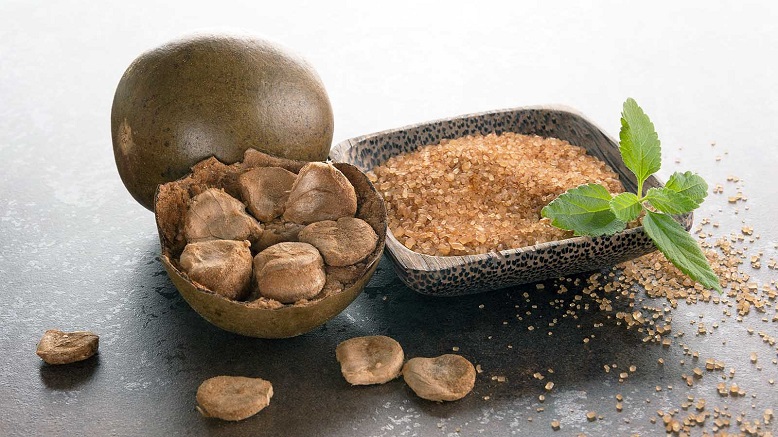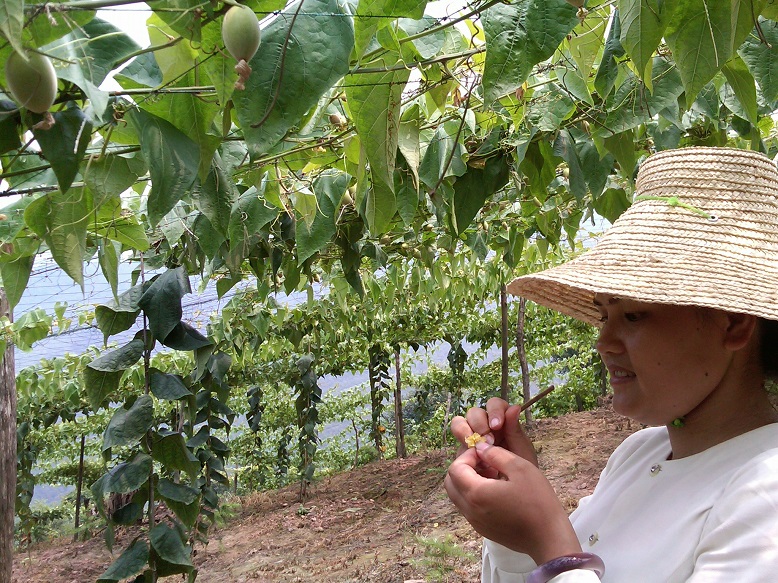These days, people tend to avoid sugar as much as possible. This is the reason why alternative sweeteners have become more popular. One such popular sweetener is monk fruit sweetener, also known as monk fruit extract.
This sugar alternative has been around for decades but has recently grown in popularity since it has become more readily available. If you are still not very familiar with it, in this article we are going to tell you everything you need to know about monk fruit sweetener.
What Is Monk Fruit Sweetener?
 |
| Source: recipes.howstuffworks.com |
For creating this sweetener, the seeds are removed as well as the skin of the fruit, thus crushing in to collect the juice. After that, it is dried into a concentrated powder. This fruit extract contains natural sugars (mainly fructose and glucose) and zero calories. However, the natural sugars in this fruit aren't responsible for its sweetness (as is the case with most fruits). Instead, monk fruit gets its intense sweetness from unique antioxidants known as mogrosides. During processing, mogrosides are separated from the fresh-pressed juice, so monk fruit sweetener doesn't contain fructose or glucose.
This extract is 100-250 times sweeter than table sugar. Therefore, many manufacturers mix it with other natural products, such as erythritol or inulin in order to reduce the intensity of sweetness. These days, monk fruit extract is used as a standalone sweetener, a flavour enhancer, as a sweetener in food and drinks, and as a component of sweetener blends.
Health Benefits of Monk Fruit
Positive Effect on Weight Management
 |
| Source: medicalxpress.com |
Anti-Diabetes Properties
As this sweetener contains zero calories or carbs, it will not raise blood sugar levels. Hence, it is a good option for people with diabetes. Some studies have been made on mice, which suggest that this extract may even reduce blood sugar levels. They experienced lower oxidative stress, blood sugar levels, and increased HDL cholesterol.
However, foods and drinks sweetened with this extract may include added sugars and other ingredients that increase carb and calorie counts or may affect insulin sensitivity. Therefore, you should carefully examine product labels before you purchase them.
Anti-Inflammatory Properties
According to a study made in 2011, monk fruit has been used in TCM for centuries to make hot drinks. Those hot drinks relieve sore throats and reduce phlegm. More precisely, the mogrosides of this fruit are said to have anti-oxidant and anti-inflammatory properties.
Ways to Use Monk Fruit
 |
| Source: nyonyacooking.com |
- Hot Tea/Iced Tea
- Coffee
- Lemonade
- Smoothies
- Frostings
- Yogurt
- Salad dressings
- Sauces
- Oatmeal and cereals
Wondering what does monk fruit taste like? Well, it tastes sweet. It has a course of sugar-like consistency and has a light beige colour. You will also notice that is has a slight aftertaste.
This sweetener is also heat-stable and safe to use in baked goods. Therefore, you may also use it in many recipes that require baking. Here are some examples:
Carrot Orange Bread
This is a healthy and delicious quick bread comprised of shredded carrots, almond flour, monk fruit extract, spices, and fresh orange juice.
Monk Fruit Chocolate Brownies
These are healthy brownies whose chocolate base is sweetened with monk fruit and the frosting is filled with unusual ingredients like dates, avocado, and yogurt.
Cream Cheese Frosting
This recipe provides a fresh spin on a classic. It is great for cakes, cupcakes, quick bread, and even as a yummy fruit dip. It is a mix of monk fruit sweetener, butter, cream cheese, and vanilla for a sweet treat.
How Is Monk Fruit Grown?
 |
| Source: newhope.com |
Comments
Post a Comment